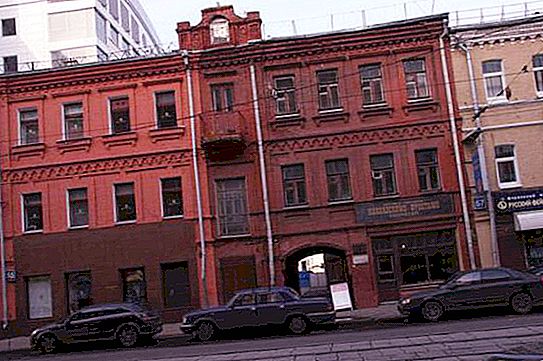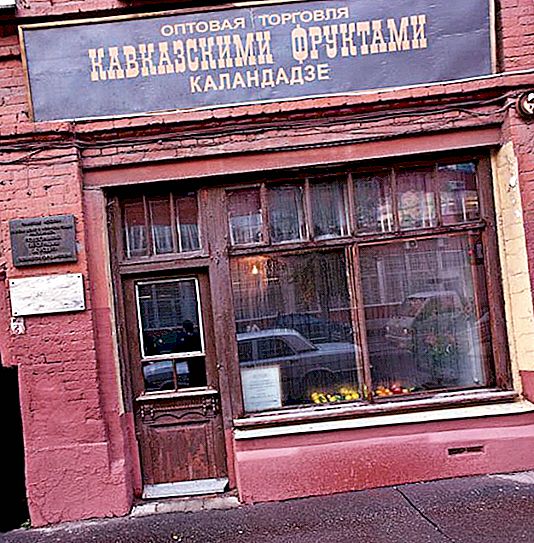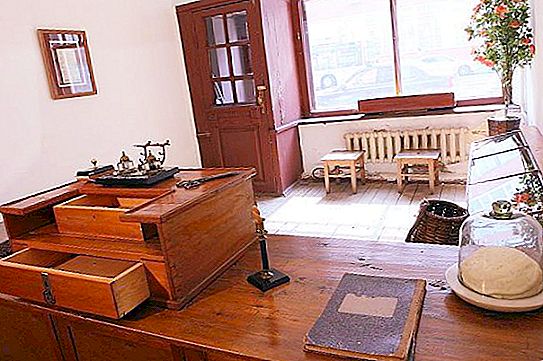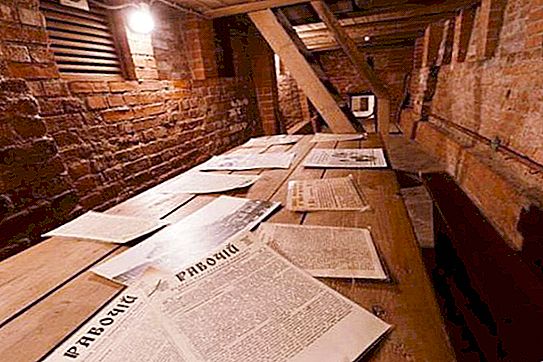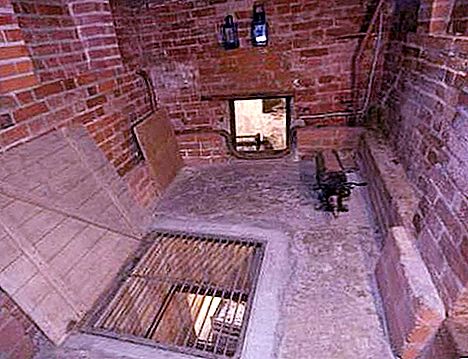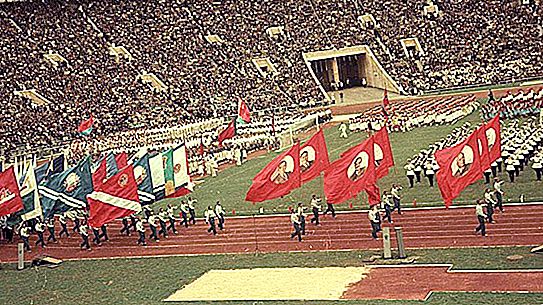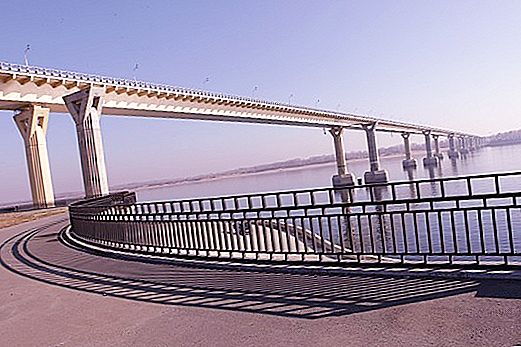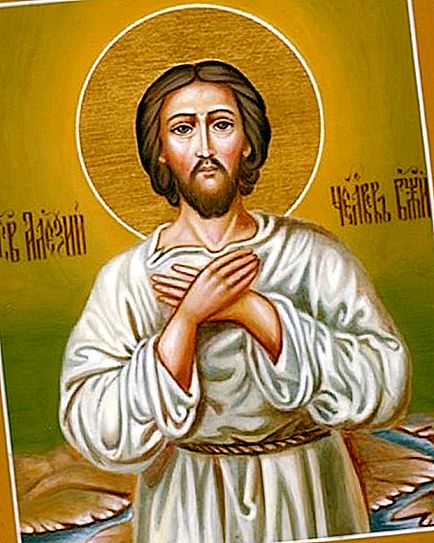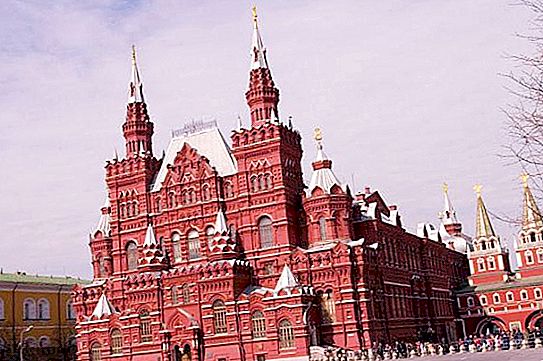Museum "Underground Printing House 1905-1906" one of the branches of the State Museum of Contemporary History of Russia. The opening of the institution took place on the territory of Moscow in 1924. The place for the creation of the museum was chosen as an ordinary residential building with three floors, the museum is located on the ground floor.
History of the museum
An illegal printing house was created on the territory of the modern museum in 1905, the purpose of which was to issue social-democratic newspapers and leaflets. The printing house was opened on the outskirts of Moscow in a residential building owned by K.M., a merchant and carriage master. Kolupaev. To cover the activities of the printing house, a small store was created in the house, which attracted buyers with a sign on the wholesale trade of Caucasian fruits. While the top of the house was a place to sell fruit, a small “cave” was dug in the basement in which a portable printing press was placed.
The owner of the store was officially recognized as Marian Kalandadze, a port loader who had extensive trading experience, but not a pure reputation. On behalf of Kalandadze, Silvan Kobidze, who was a revolutionary and an active participant in all kinds of strikes, was engaged in commercial affairs in a hidden printing house. He lived in the shop with his wife and little daughter.
To hide their activities, the underground had to buy fruit from other suppliers, as a result of which the store brought only one loss. But the activities of the printing house were very successful, although it was directly associated with great risks, since there was a police station near the store and printing house, and law enforcement officers patrolled the street daily.
When the government found out about the existence of this printing house, a huge number of police officers were allocated to search for it. But it was not possible to reveal the location of the establishment, a year later it was decided to close the printing house, and transport the printing press to a new building.
In 1922, VN Sokolov, who previously held the position of the head of the Transport Technical Bureau of the RSDLP, remembered the former location of the printing house, who brought up the idea of creating a museum on the site of the former printing organization. For 2 years, the building was restored, and already in 1924 the first museum was opened, dedicated to the political history of Russia during the first Russian revolution. An interesting fact is that the initiators of the opening of the museum were precisely those people who previously worked in it.
Museum components
Since the opening of the museum "Underground Printing House 1905-1906." included a restored storehouse, a basement and the printing house itself. Moreover, all visitors of that time unanimously claimed that it was necessary to evict tenants (the remaining premises of the house remained residential) and to increase the number of rooms in the museum, but the museum leaders decided not to take such cardinal decisions.
In the 50s of the twentieth century. the museum and the kitchen, previously owned by Silovan Kobidze, were transferred to the museum.
Museum exposition
The Museum of the Underground Printing House (Moscow) is presented in the form of a number of rooms facing the street, among which there are a basement, an entrance hall, a living room, and a kitchen. A special role is played by the genuine showcase of the former store, which in 1927 was reconstructed by the hands of N.D. Vinogradov. The interior of the rooms fully complies with the model of living conditions of Moscow citizens and includes elements of Georgian life.
Inside the museum "Underground Printing House 1905-1906." there is a typical Russian stove and a large number of kitchen utensils.
The basement, where the printing house was previously located, is a warehouse with boxes and barrels filled with fruits and cheese, and at the bottom of these barrels there are leaflets and newspapers produced here. In turn, the printing house, in which the printing press is located, is located in a well intended for the flow of water. People are not allowed into that room, but the interior there can be seen through the window created in the basement wall.
At the box office, where tickets are now being sold to the museum, you can find a number of photographs, as well as documents that describe in detail the history of the printing house, and then the museum.
Museum's modern activities
Today, the museum still continues its activities, you can get to it using the metro, leaving at the station "Belorusskaya" or "Mendeleevskaya". Then you can walk to Lesnaya street, 55. This is the address of the museum.
The museum has two excursions:
- The same name with the museum. On the tour, visitors are told about the history of the printing house, the features of its activities.
- Shop with a secret. A tour of the theatrical type, which makes it possible to completely plunge into the days of revolutionary Russia and introduce yourself as a resident of the early 20th century.
The underground printing house museum (the nearest metro station is Belorusskaya or Mendeleevskaya) can be accessed from the yard on Tuesday, Wednesday, Friday and Sunday from 10 a.m. to 6 p.m., and on Thursday and Saturday from 11 a.m. to 7 p.m. Monday is a day off.
In addition, the Museum "Underground Printing House 1905-1906" (Lesnaya, 55) hosts all kinds of exhibitions and meetings dedicated to contemporary writers.
Museum Visit Cost
Museum ticket price depends on age:
- an adult ticket costs one hundred and fifty rubles;
- for students and pensioners - seventy rubles;
- for disabled people and children up to 16 years old admission is free.
Excursions in the museum "Underground printing house 1905-1906." paid.
Museum building in films
Throughout its existence, the museum building "Underground Printing House 1905-1906." several times got into various films, here are the main ones:
- "American" is a film of the artistic type, shot by Leonard Isaac in 1930 on the territory of the USSR. The building fell into the frame during Lenin's speech on Lesnaya Street.
- “Underground printing house of the Central Committee of the RSDLP in Moscow” - a documentary film that tells the story of the creation of this printing house, was released on the territory of the USSR in 1975.
- “House on Lesnaya” is a film shot in an artistic style about the history of the creation of the first underground printing house.
The first and last films are shown in the museum, and visitors have the opportunity to watch them.
Museum of Literature
The underground printing house, and, accordingly, the modern museum and representatives of literature, were not ignored.
N.N. Popov, published under the pseudonym Deer the Misty, in 1928 released an adventure novel called “The Secret of the Old House”, in which the story of the creation of the printing house and its activities was described in great detail.
In his story “Love for electricity” V.P. Aksenov also mentioned the underground Moscow printing house, but he devoted only one chapter to it entitled “Quiet evening in the Georgians”.
The clandestine printing house was even mentioned in science fiction works, for example, in 1992, Kir Bulychev, in a science fiction novel entitled “A Reserve for Academics, ” talks about alternative reality.
Using typography history in quests
The popularity of the underground printing house is so great that in 2015, the State Central Museum of Contemporary History of Russia launched the Virtual Museum project. The history of the former printing house formed the basis of the quest game "Get out of the Ground", which includes as many as three storylines.
Underground Printing House in Perm
Despite the great popularity of the underground printing house located in Moscow, in no case should you forget about another similar organization operating in the city of Perm. The house-museum "Underground Printing House" has the following address: 142 Monastyrskaya Street.
Today on the territory of the printing house there is also a museum that looks like an unobtrusive residential building. Unlike the Moscow printing house, which was located in the merchant’s home, the house of ordinary workers was chosen in Perm to house the printing house.
The owner of the dwelling was the Tiun steamship operator. The man practically did not visit the house due to constant business trips, therefore, in order to maintain him in a residential condition, the house was rented out to tenants. Once again renting out his housing, Tiunov could not even imagine that it was here that underground activity would boil.
The initiator of the creation of an underground printing house in 1906 was Ya.M. Sverdlov. Members of the underground managed to release a huge number of leaflets, until in June of that year the location of the printing house was discovered. Participants in the underground took great risks by renting a room to create leaflets two blocks from the police station, and this risk was unjustified - all the underground were arrested.
The Underground Typography house-museum (Monastyrskaya 142) is located in a small house made of wood, adjacent to it is an equally small piece of land. The house consists of three small rooms.
After examining the canopy, you can go to the kitchen, hallway, and then to the room, which is decorated in exactly the same way when there was a machine for printing leaflets and newspapers.
Today, the museum provides its visitors with the opportunity to see the printing press, several types of fonts, rollers, corners for a set of fonts and leaflets.
